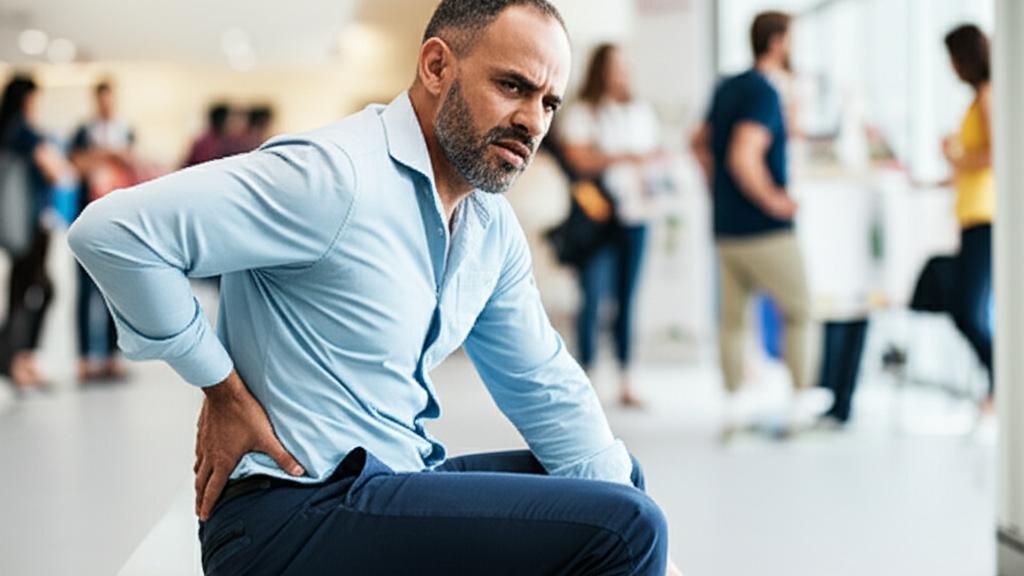It was a chilly Saturday morning, and the local community center buzzed with activity. The center was hosting its monthly health fair, a favorite gathering for residents. As I greeted participants, a middle-aged man, David, approached me with a hesitant smile.
“Dr. Priya,” he began, “I’ve been dealing with persistent back pain for weeks. It started after moving some heavy boxes during our last house move. I’m not sure if it’s serious, but it’s affecting my work and daily life.”
David’s story is a familiar one. Backache is one of the most common complaints, affecting people of all ages. Understanding its causes and learning how to manage it can significantly improve one’s quality of life.
What Causes Backache?
Most often, backache is caused by minor strains in the muscles or ligaments. However, more severe lower back pain can result from injuries to the joints at the base of the spine. These joints, including the facet joints and discs, act as cushions between the vertebrae. When disturbed, they can press against spinal tissue or nerve roots, resulting in pain.
David’s case was classic. His pain likely stemmed from bending improperly while lifting heavy objects—a common culprit. Lifting with the back bent forward, instead of using the legs for support, puts undue stress on the spine. Other common causes of back pain include:
- Poor posture: Slouching at a desk or sitting for prolonged periods without proper back support.
- Sudden movements: Twisting or overloading muscles during activities like golf, squash, or even vigorous gardening.
- Inadequate rest: Sleeping on an old or unsupportive mattress that doesn’t keep the spine aligned.
- Excess Weight: Carrying extra weight, especially around the midsection, constantly strains the back muscles.
- Direct Injury: Trauma from falls or accidents can cause immediate back problems.
How to Care For Your Back in Daily Life
As I advised David, managing backache involves being mindful of your movements and making small lifestyle adjustments. Here are some of the most effective strategies:
| Area of Focus | Practical Advice |
|---|---|
| Lifting and Bending | Always squat close to an object with a straight back and lift with your legs. Never stoop with a bent back. When tying shoelaces, place one foot on a stool. |
| Sitting and Posture | Keep your knees higher than your hips when sitting. Use a chair with good lumbar support. Take frequent breaks from your desk to stand and stretch. |
| Sleeping Position | A firm mattress is best. Try to lie on your side with a pillow between your knees to keep your spine aligned. Avoid sleeping on your stomach. |
| Exercise and Activity | Regular, low-impact exercise like walking, swimming, or yoga strengthens core muscles that support the back. Avoid sudden, jerky movements. |
Managing an Acute Episode of Pain
If you’re already in pain, the goal is to manage discomfort and promote healing. Here’s what I demonstrated in my workshop:
- Stay Gently Active: Contrary to old beliefs, prolonged bed rest can make things worse. Gentle walking and stretching prevent stiffness and can speed up recovery.
- Use Pain Relief Wisely: Over-the-counter analgesics like paracetamol or ibuprofen can help manage discomfort. Use them as directed.
- Apply Heat or Cold: A cold pack can help reduce inflammation in the first 48 hours. After that, a warm compress can help relax tight muscles.
When to See a Doctor
While most backaches resolve with self-care, certain symptoms are red flags that warrant medical attention. Seek professional help if:
- The pain persists beyond a few weeks despite self-care.
- You experience numbness, tingling, or weakness that travels down your legs.
- The pain is accompanied by unexplained weight loss or fever.
- You have any loss of bladder or bowel control—this is an emergency.
These could indicate more serious conditions like a herniated disc or a spinal infection that need to be addressed promptly.
Take-Home Message
- Lift with your legs, not your back. Keep your back straight and use the power of your legs and core.
- Pay attention to your posture. Sit up straight, and take frequent breaks to move around.
- Stay active. A strong core is the best defense against back pain. Low-impact exercise is key.
- Know when to get help. Don’t ignore persistent pain or red flag symptoms like numbness or weakness.


